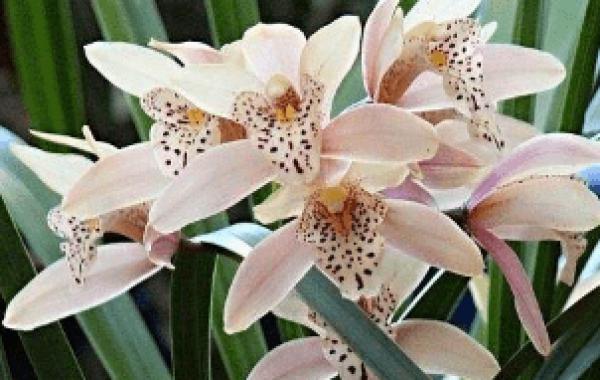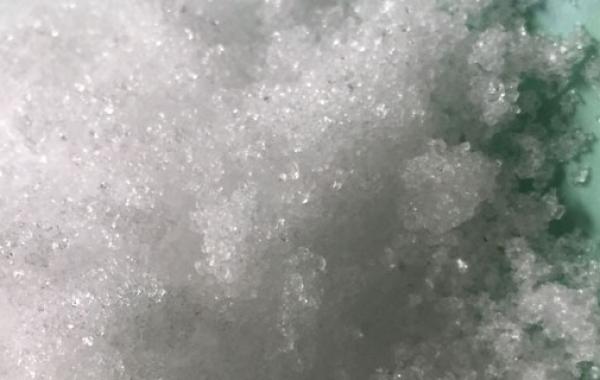How to apply fertilizer outside the root of orchids? Fertilization method outside the Root of Orchid

Orchid is a unique style of flowers, its ornamental value is very high. Orchids elegant color, which to tender green, yellow-green majority, but especially to the heart of those rare. Orchid fragrance, clear but not turbid, a pot in the room, fragrance overflowing. "Two or three orchids are planted in hand, and the sun is warm and the sun is open; I sit for a long time without knowing that incense is in the room, and butterflies fly when I push the window." This poem of the ancients expresses the delicate fragrance of orchids vividly. If you want to plant orchids, you must understand the method of applying fertilizer outside the root of orchids. The fertilizer outside the root of orchids has the characteristics of less fertilizer, fast absorption and strong pertinence. It plays a very important role in preventing and controlling element deficiency and enhancing the growth and disease resistance and cold resistance of orchids.
Orchids grow like other plants, first of all to meet the needs of nitrogen, phosphorus, potassium three elements, but trace elements of calcium, iron, zinc, magnesium, copper, boron, molybdenum, etc., are also essential. Commonly used for orchid foliar fertilizer fertilizer, nitrogen containing urea, ammonium sulfate, ammonium nitrate; phosphorus containing calcium superphosphate, potassium phosphate, potassium dihydrogen phosphate; potassium containing potassium nitrate, potassium chloride; calcium containing calcium superphosphate; iron containing ferrous sulfate; zinc containing zinc sulfate; magnesium containing magnesium sulfate; copper containing copper sulfate; boron containing borax, boric acid; molybdenum containing molybdic acid.
Spray fertilizer concentration for orchid foliar fertilizer, must be carried out in accordance with a certain proportion, in order to ensure that both good fertilizer efficiency, but also do not suffer fertilizer damage. The fertilizer concentration varies according to different fertilizer types, generally master: urea 0.2%, potassium dihydrogen phosphate 0.3%, potassium sulfate, potassium nitrate compound fertilizer 0.1%, calcium superphosphate 0.5%, magnesium sulfate 0.5%, ferrous sulfate 0.5%, zinc sulfate 0.1%, copper sulfate 0.2%, borax, boric acid 0.3%, molybdic acid 0.1%. In addition, Xiangyiduo, Yuanshuo, Shida, Lanjunwang, Spraybao and other fertilizers must be formulated and applied according to product instructions.
The spraying part is the part of orchid foliar fertilizer spraying, and the emphasis must be on the north side of the leaf. This is because the leaf has a layer of bright cuticle on the front, and fertilizer is not easy to enter. The back does not have cuticle, and there are many stomata, fertilizer easy to penetrate and absorb. But when spraying, we must spray the whole plant, that is, all parts other than orchid roots: leaves, petioles, leaves and bulbs on the soil. The orchid plants placed on the ground must be placed laterally and rotated for one week when spraying fertilizer, so that the fertilizer solution can be comprehensive and promote the balanced growth of the orchid plants.
Spray fertilizer timing orchid foliar fertilizer, in the period of new buds and new roots, generally 7~10 days to apply 1 time, even apply 2~3 times. Flower buds to flowering, every half month or so apply 1. In other growth periods, nitrogen and potassium fertilizer should be applied once or twice a month. In vegetative growth period, phosphorus and potassium fertilizer should be applied more. The time of foliar fertilizer spraying depends on the weather, temperature and humidity. When the temperature is between 18~25℃, the stomata of orchid leaves are fully opened, and the effect of spraying fertilizer is *. When the temperature is below 15℃, the stomata of the leaves are closed or opened very little due to low temperature, and the fertilizer solution is not easy to absorb. When the temperature is above 30℃, the leaves are baked due to high temperature, and spraying fertilizer will cause fertilizer damage. When the air humidity is high, the fertilizer solution stays on the leaves for a long time and absorbs more nutrients. The best time to spray fertilizer is on a sunny day or cloudy day without wind, and it is better in the morning and evening. At the same time, attention should be paid to not applying in cold, hot, rainy, noon and flowering.
Related
- Is the orchid suitable for indoor use? Is it good for the body?
- How to prevent the empty root of orchids?
- What to do after the crab claw orchid is withered?
- Why are the leaves of orchids always yellow? Fertilizing and watering.
- Can the root of the gentleman orchid be saved if it is rotten?
- Diagnosis and treatment of cotton-blowing beetle insects in Cymbidium
- There is a way for a gentleman's orchid to rot.
- What is the most suitable temperature and humidity for the orchid?
- How to raise a gentleman's orchid? Cultivation techniques of Cymbidium
- How to prepare the nutritive soil for the cultivation of Cymbidium



